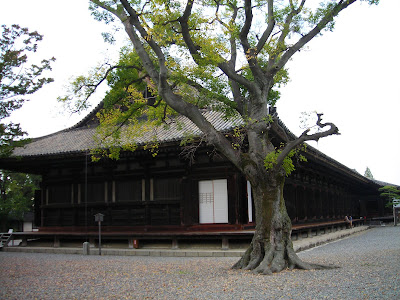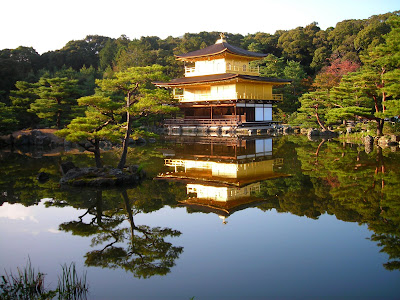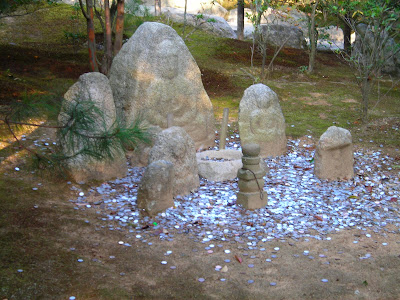Koryuji and Sanjusangendo
The grounds of Koryuji do not look like much, although there are a number of old buildings and such (see below). They were quiet though--no school children, no tour busses, just me and a few old Japanese people.

However, I was not going to Koryuji to see the grounds. Koryuji is home to a number of extremely important pieces of Buddhist art, including one of my absolute favorites (also very famous)--the Miroku Bosatsu. Miroku refers to the position it is in, a distinctive kind of thinking pose (that's what it looks like to a westerner, anyways), with the hands near the face. It is a friendly figure, dating to the 7th century, and it has an archaic smile. It is polished and shiny from the centuries, and is very beautiful. Seeing it in real life was pretty awesome. The museum at Koryuji has a lot of other great works of art as well, and is very serene and pleasant. There was almost no one there, again, and the elderly Japanese man who was taking the tickets seemed surprised to see me. Definitely worth a visit, at least for me.
At some other point, possibly during this day, and possibly not, I decided to go to Sanjusangendo. I took the bus, and found it quite quickly. You couldn't miss the enormous groups of school children. But that was okay. Sanjusangendo was another of those sites I'd learned about in Japanese art history, and always wanted to visit.
Sanjusangendo is essentially just this building in the middle of a courtyard, surrounded by a somewhat later wall. It is remarkable primarily because it does not look like a normal Japanese temple at all. Sanjusangendo means, basically, 33 bay hall, and this is what it is. Because of this, it is extremely long. In the old days, people used to do an archery contest here, shooting arrows down the long length of the hall. It is also very old, and quite impressive, in a strange way.
You can see the bays... I didn't actually count them, but I am confident there are thirty-three.









